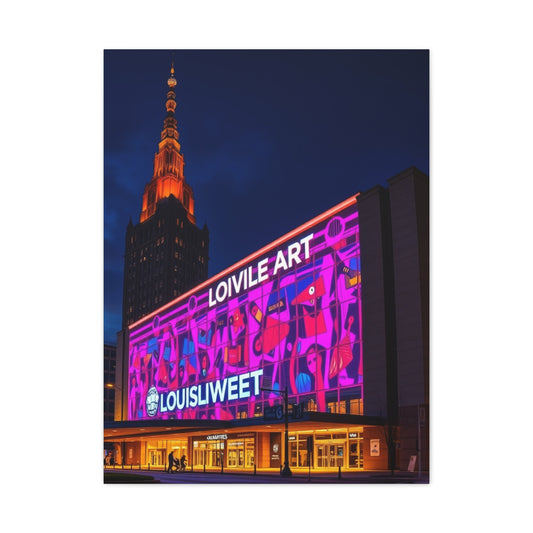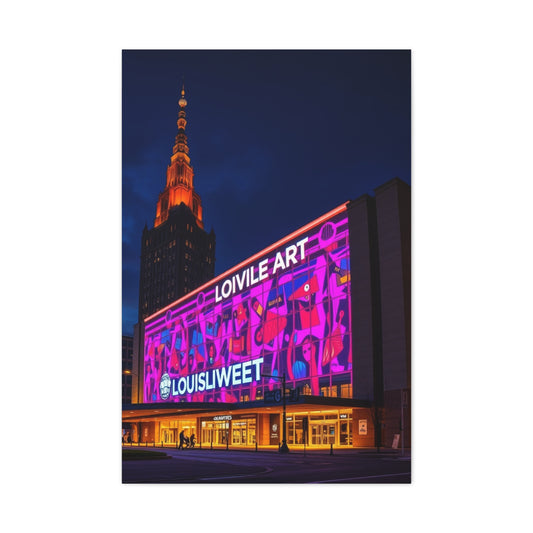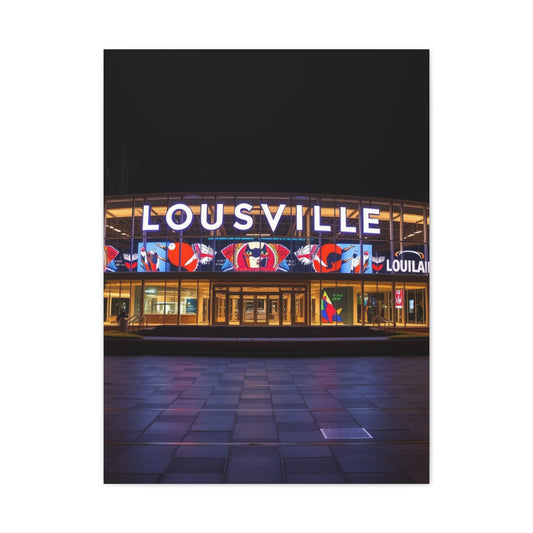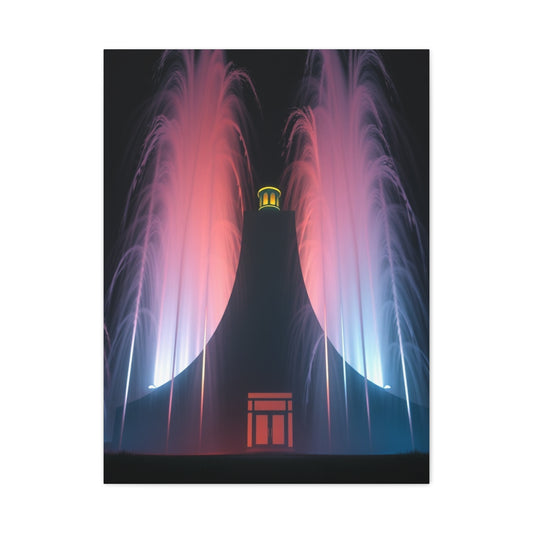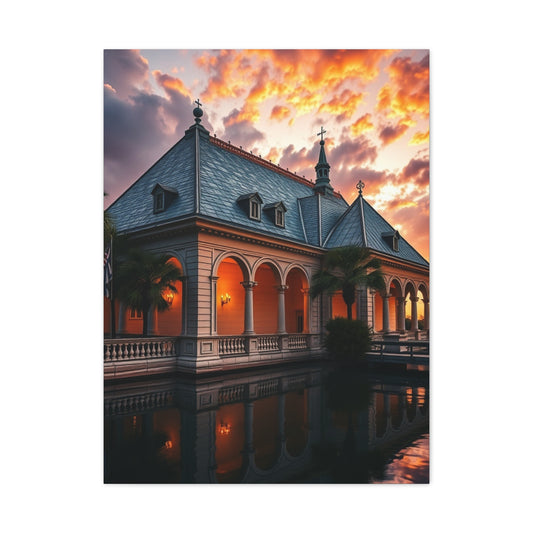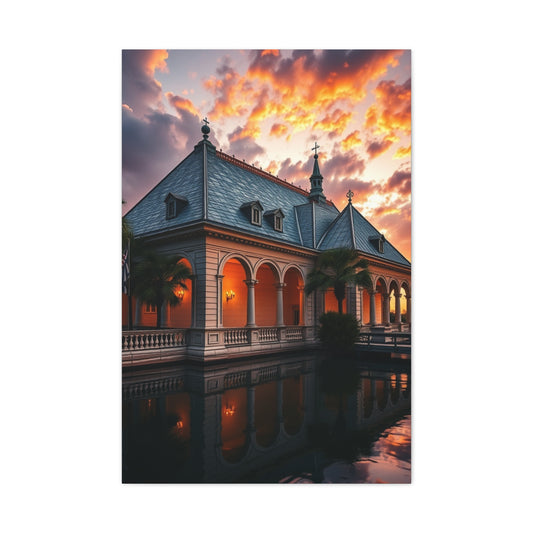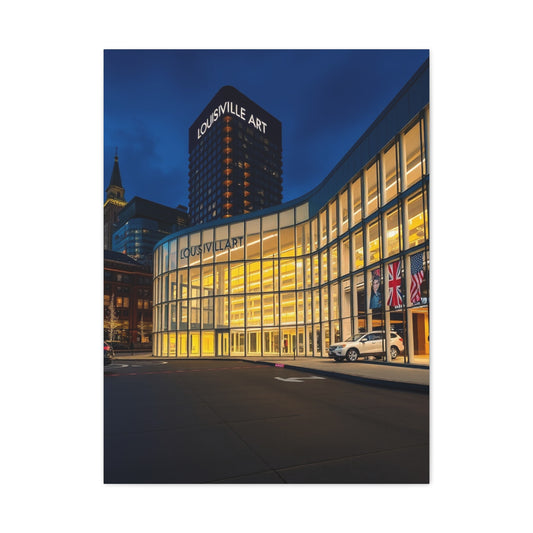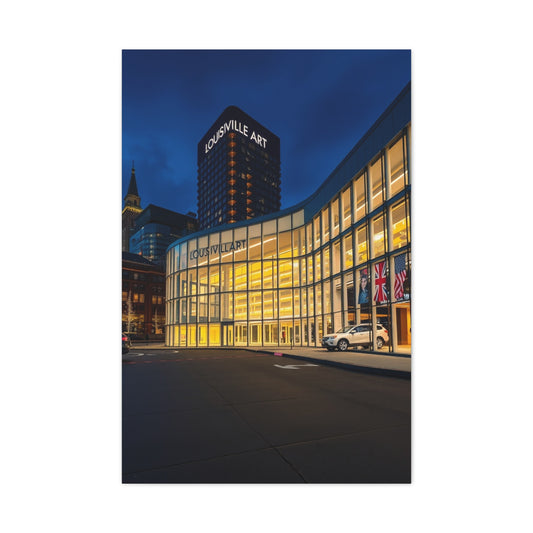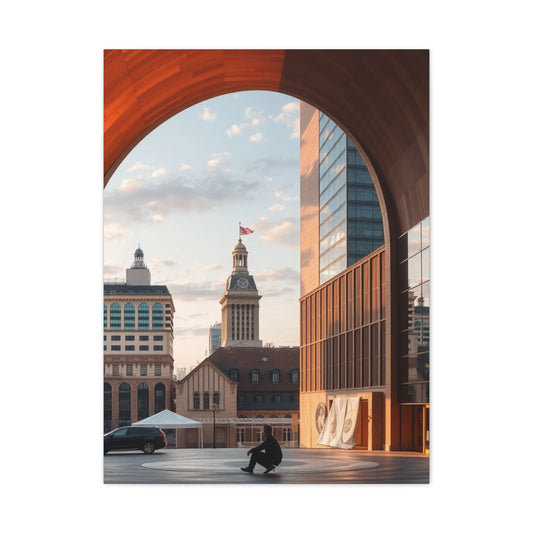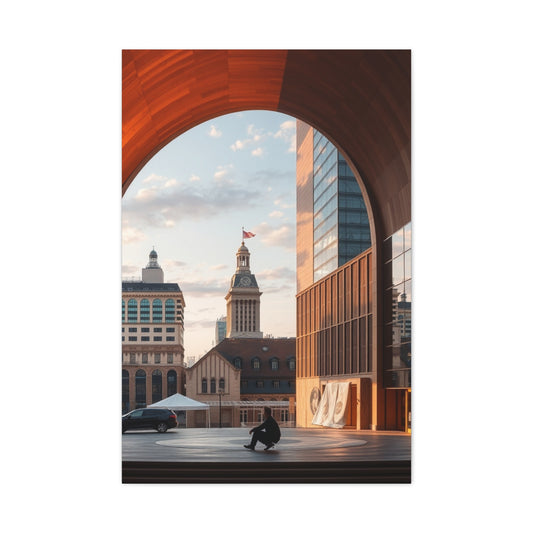Lighting plays a pivotal role in defining the aesthetics, functionality, and overall ambiance of a home. Even the most beautifully designed interiors can appear dull if the lighting is not planned properly. False ceilings, which have become a staple in modern home design, offer an excellent opportunity to integrate a variety of lighting solutions that enhance the visual appeal of interiors while serving functional purposes. False ceiling lights are versatile, space-efficient, and capable of creating layered lighting effects that elevate the mood of any room.
The primary advantage of integrating lights into a false ceiling is the seamless and clutter-free appearance it provides. Unlike traditional hanging fixtures or wall-mounted lights, false ceiling lights are often embedded into the ceiling structure, creating a sleek and minimalistic look. This not only improves aesthetics but also allows homeowners to experiment with a combination of ambient, task, and accent lighting. A well-lit space with a false ceiling can highlight architectural details, draw attention to furniture or artwork, and set the desired mood, whether it is cozy, vibrant, or sophisticated.
False ceilings serve as more than just a decorative feature; they act as a canvas for lighting design. By incorporating various types of lights such as recessed LEDs, cove lights, panel lights, and mounted fixtures, homeowners can create a dynamic and visually engaging environment. For instance, recessed LED lights are ideal for spotlighting specific areas or objects, while cove lighting provides soft indirect illumination that adds warmth and depth. Each type of light brings unique characteristics and can be strategically placed to maximize both function and aesthetics.
One of the most popular lighting options for false ceilings is recessed LED lights. These lights are installed flush with the ceiling, creating a clean and modern appearance. Recessed LEDs are highly energy-efficient and provide focused illumination, making them ideal for highlighting specific areas such as seating arrangements, artwork, or decorative pieces. Their compact design ensures they do not occupy space or interfere with the ceiling’s overall structure, which is particularly beneficial for rooms with low ceiling heights. Additionally, recessed LEDs are available in a variety of color temperatures, from warm white to cool daylight, allowing homeowners to customize the ambiance according to their preferences.
Cove lighting is another widely used solution for false ceilings. Unlike recessed lights that provide direct illumination, cove lights emit a soft, diffused glow that creates a gentle and inviting atmosphere. These lights are typically installed along the edges or perimeter of the ceiling, often hidden behind a false ceiling layer or decorative molding. The indirect lighting effect not only enhances the room’s visual appeal but also reduces glare and creates a sense of spaciousness. Cove lighting is particularly effective in living rooms, bedrooms, or lounge areas, where a relaxed and ambient atmosphere is desired. The flexibility of LED strips in cove lighting also allows for creative use of colors, gradients, and dynamic lighting effects that can change according to mood or occasion.
Mounted ceiling lights are another practical option for false ceilings, especially in areas with spatial constraints. These lights are attached directly to the ceiling surface and are suitable for bathrooms, kitchens, or small rooms where hanging fixtures are not feasible. Mounted lights offer uniform illumination and are available in various shapes, sizes, and finishes, allowing them to complement the room’s décor. In addition to functionality, mounted lights provide a visually balanced lighting solution that ensures even coverage across the entire room. Their affordability and ease of installation make them a popular choice for homeowners looking to maximize both utility and aesthetics.
Panel lights have also gained popularity as a modern solution for false ceilings. These lights are thin, flat, and often square or rectangular, fitting neatly into the ceiling framework. Panel lights provide consistent, diffused illumination that evenly lights up the entire room, making them ideal for spaces like kitchens, home offices, or study areas. They are energy-efficient, low-maintenance, and easy to install, which makes them a convenient choice for homeowners seeking both style and practicality. Additionally, panel lights can be combined with dimmers and smart lighting systems, allowing for flexible control of brightness and ambiance.
The choice of false ceiling lights also depends on the function and mood desired in each room. In bedrooms, soft and warm lighting is often preferred to create a cozy and relaxing environment. Layered lighting using recessed LEDs combined with cove lights can provide both task lighting for reading and ambient illumination for relaxation. Living rooms and lounges may benefit from a combination of panel lights for uniform lighting and accent lights to highlight décor or architectural features. Kitchens, study rooms, and workspaces require brighter and focused lighting to ensure clarity and functionality, which can be achieved using a combination of panel and mounted lights.
Integration of lighting with the false ceiling also allows for creative expression and customization. Modern LED technology offers a wide array of options, including color-changing lights, dimmable fixtures, and smart controls that can be operated via remote or mobile apps. This enables homeowners to adapt the lighting to different moods, activities, or occasions without changing the physical fixtures. The flexibility of design, coupled with technological advancements, allows for creating dynamic interiors that are both functional and visually captivating.
Safety and efficiency are also significant considerations when choosing false ceiling lights. LED lights are preferred due to their low energy consumption, long lifespan, and minimal heat emission. Proper installation ensures that electrical wiring is concealed within the false ceiling, reducing the risk of accidental damage and providing a clean, organized look. Additionally, choosing moisture-resistant and fire-safe lighting fixtures enhances safety, particularly in kitchens, bathrooms, or areas prone to humidity. Combining aesthetics, safety, and efficiency ensures that the false ceiling lighting system adds value to the home while being reliable and durable.
Another important factor to consider is the impact of false ceiling lighting on interior décor and room proportions. Lighting can be used strategically to enhance the perception of space, making small rooms appear larger and larger rooms feel cozier. By positioning lights in specific zones, homeowners can create focal points and highlight architectural features or furniture layouts. For example, recessed lights along the perimeter can accentuate the ceiling design, while panel lights can ensure even illumination in functional areas. This strategic placement of lights not only improves aesthetics but also enhances the practical usability of each space.
Maintenance and longevity of false ceiling lights are also notable advantages. LED fixtures, panel lights, and other modern lighting options require minimal upkeep. Unlike traditional bulbs that burn out frequently, LED lights can last for several years, reducing replacement costs and inconvenience. Additionally, the integration of lights within the false ceiling protects them from dust and accidental damage, further extending their lifespan. For homeowners, this means enjoying consistently well-lit interiors without frequent maintenance or disruptions.
The cost factor is another consideration in false ceiling lighting. While there are options available for various budgets, planning the lighting system carefully ensures maximum impact without overspending. Recessed LEDs and panel lights offer cost-effective solutions for general illumination, while cove lighting and accent fixtures can be selectively used to enhance the visual appeal. Considering energy efficiency, longevity, and functional requirements allows homeowners to choose lighting that is both economical and effective in the long run.
In addition to functionality, false ceiling lights contribute to the overall mood and ambiance of the home. Lighting can dramatically alter the perception of color, texture, and space. Warm white lights create a cozy, inviting atmosphere, while cooler daylight tones provide a bright and energetic environment. Accent lighting can highlight decorative elements, artworks, or architectural features, adding depth and sophistication. By combining different types of lights in a layered arrangement, homeowners can create a versatile lighting scheme that adapts to daily routines, social gatherings, or special occasions.
The integration of false ceiling lights is not just about illumination but also about enhancing lifestyle and comfort. A well-planned lighting system complements furniture, décor, and wall finishes, creating a harmonious environment that feels welcoming and stylish. Modern false ceiling lighting solutions allow for customization according to personal taste, ensuring that each room reflects the homeowner’s vision and lifestyle. The combination of aesthetics, functionality, and technology makes false ceiling lighting a central element in contemporary interior design.
False ceiling lights are a crucial element in modern home interiors. They provide functional illumination, enhance aesthetics, create mood and ambiance, and integrate seamlessly with contemporary ceiling designs. From recessed LEDs and cove lights to mounted fixtures and panel lights, each type offers unique benefits and applications, allowing homeowners to design versatile and visually appealing interiors. Careful planning, strategic placement, and consideration of material, color temperature, and intensity ensure that false ceiling lights add value, beauty, and functionality to every home.
A thoughtfully designed lighting system transforms spaces, highlights architectural features, improves comfort, and elevates the overall living experience. By combining different types of false ceiling lights, leveraging modern technology, and focusing on both aesthetics and practicality, homeowners can create interiors that are not only visually stunning but also functional, safe, and energy-efficient.
Cove Lighting for False Ceilings
Cove lighting is one of the most versatile and aesthetically pleasing types of false ceiling lighting. Unlike traditional fixtures that cast direct light, cove lighting provides indirect illumination that gently spreads across a room, creating a soft, ambient glow. It is typically installed along the perimeter of a false ceiling, recessed within ledges or coves, which conceals the light source and enhances the room’s elegance. The subtlety and sophistication of cove lighting make it a favorite choice among modern homeowners who want a luxurious yet understated ambiance in their interiors.
One of the primary advantages of cove lighting is its ability to create a sense of depth and dimension within a room. By placing LED strips or other lighting sources along the edges of a false ceiling, the light bounces off walls and ceilings, producing a warm, diffused effect. This indirect illumination softens harsh shadows, reduces glare, and makes spaces feel more inviting. The gentle wash of light can make living rooms cozier, bedrooms more relaxing, and dining areas feel intimate, enhancing the overall mood and comfort of the home.
Cove lighting also allows for significant customization in terms of color, brightness, and design. LED strips, the most common choice for cove lighting, are available in multiple color temperatures, ranging from warm white to cool white, and even RGB options that change color. Homeowners can adjust the intensity of the light using dimmers or smart lighting systems, tailoring the ambiance for different occasions, moods, or times of day. For instance, a warm glow can create a relaxed atmosphere in the evening, while cooler tones may be suitable for reading, working, or lively gatherings.
The design flexibility offered by cove lighting is another notable benefit. Cove lights can be installed in straight lines along the perimeter, around multi-level false ceilings, or even in geometric or curved shapes, depending on the ceiling design. Multi-level false ceilings often use cove lighting to accentuate layers, creating a visually dynamic environment. Curved or circular ceiling designs benefit from cove lighting that follows the contour of the ceiling, producing a fluid and harmonious glow. This versatility allows homeowners and designers to experiment creatively, enhancing both the aesthetics and architectural character of a room.
Cove lighting is also highly energy-efficient, especially when paired with LED technology. LED strips consume minimal electricity, produce very little heat, and have a long lifespan, making them a sustainable and cost-effective lighting solution. In addition to energy savings, LED cove lights require less frequent maintenance compared to traditional bulbs, reducing long-term upkeep and replacement costs. This combination of efficiency, durability, and elegance has contributed to the widespread adoption of cove lighting in modern homes.
The integration of cove lighting with other types of false ceiling lights further enhances its utility and aesthetic appeal. For example, combining cove lights with recessed LEDs or panel lights allows for layered lighting, where the indirect glow of the cove complements direct illumination in functional areas. This layered approach provides a balance between visual comfort and task lighting, ensuring that spaces are well-lit without feeling harsh or overexposed. Accent lights can also be used alongside cove lighting to highlight artwork, décor, or architectural features, adding a touch of drama and sophistication to the room.
Cove lighting can be customized for various rooms and functions. In living rooms, it can create a welcoming environment for socializing and relaxation, while in bedrooms, it contributes to a calming, cozy atmosphere. Dining rooms benefit from cove lighting that enhances intimacy and sets a pleasant mood for meals. Even in kitchens and workspaces, indirect lighting from coves can complement task lighting, providing sufficient illumination without creating harsh shadows or glare. The adaptability of cove lighting ensures that it fits seamlessly into a wide range of interior settings and design preferences.
Installation of cove lighting requires careful planning and attention to detail. The false ceiling must have an appropriate ledge, recess, or molding to conceal the light source effectively. The depth, width, and height of the cove must be calculated to ensure even light distribution and prevent hotspots or shadows. LED strips or fixtures are often placed within aluminum channels or profiles that not only secure the lights but also diffuse them, providing a smooth and uniform glow. Proper wiring and positioning are crucial for safety, aesthetics, and long-term functionality.
Cove lighting is also ideal for creating mood and thematic effects. For example, RGB LED strips can cycle through colors or be set to specific hues to match festive occasions, parties, or seasonal décor. Homeowners can experiment with gradients, fading effects, or dynamic lighting patterns, transforming interiors into lively and visually engaging spaces. Even with a minimalist interior, cove lighting can serve as a focal feature, adding elegance without overwhelming the décor.
Maintenance of cove lighting is relatively simple. LEDs are durable and require minimal cleaning, though occasional dusting ensures that the light output remains consistent and aesthetically pleasing. The concealed placement of cove lighting within the false ceiling protects the fixtures from accidental damage, moisture, and dust accumulation, further enhancing their longevity. Homeowners can enjoy a sophisticated lighting effect without frequent upkeep or interruptions.
In terms of design trends, cove lighting is often combined with layered or multi-tiered false ceilings to create a premium, hotel-like ambiance in homes. Multi-level ceilings with integrated cove lights enhance the perception of space and add architectural interest. Designers frequently use contrasting colors or textures between ceiling layers to make the cove light stand out, creating a dramatic and visually appealing effect. This combination of form, function, and aesthetics has made cove lighting a defining feature in contemporary interior design.
Another advantage of cove lighting is its compatibility with smart home systems. Modern LED strips can be controlled via mobile applications, voice commands, or automated schedules. Homeowners can adjust brightness, color, and lighting patterns from anywhere, providing convenience, energy efficiency, and personalized control. Integration with smart home ecosystems also allows Cove lighting to sync with music, alarms, or seasonal settings, enhancing the immersive and interactive experience within the home.
Cove lighting also contributes to the spatial perception of a room. By placing lights along the edges or perimeter of a ceiling, the room can appear larger and more open. This visual trick is especially useful in smaller apartments or rooms with lower ceilings. The soft, indirect glow reduces the feeling of confinement while accentuating architectural features and furniture layouts. Designers often combine cove lighting with mirrors, wall textures, or ceiling finishes to amplify this effect, creating a more expansive and harmonious interior.
The cost of cove lighting depends on several factors, including the type of LED strips, the length of installation, ceiling design, and any additional features such as color-changing or dimmable capabilities. Despite the initial investment, cove lighting offers long-term benefits in terms of energy efficiency, longevity, and aesthetic value. When planned strategically, it can significantly elevate the interior design without drastically increasing electricity bills or maintenance expenses.
Cove lighting is also extremely versatile when it comes to finishes and diffusers. Frosted covers, diffusing lenses, or aluminum channels can be used to create a uniform light output, preventing harsh glare and hotspots. These elements also protect the LED strips, ensuring consistent performance over time. The choice of finish, combined with careful positioning and spacing, determines the quality and spread of the indirect light, contributing to the overall ambiance and mood of the room.
Cove lighting is a cornerstone of modern false ceiling designs, offering a perfect blend of elegance, functionality, and flexibility. It enhances the ambiance of living spaces, creates a sense of depth, and allows for creative expression through color, intensity, and pattern variations. By integrating cove lighting with other types of lights, smart home technology, and carefully designed false ceilings, homeowners can transform their interiors into visually captivating, comfortable, and highly functional spaces.
Whether used in living rooms, bedrooms, dining areas, or even kitchens, cove lighting provides an energy-efficient, low-maintenance, and aesthetically superior solution for modern homes. Its ability to complement different interior styles, from minimalist to contemporary, makes it an essential tool in creating cohesive, stylish, and inviting environments. Proper planning, installation, and customization ensure that cove lighting continues to enhance the beauty, mood, and functionality of a home for years to come.
Panel Lights and Recessed Lighting for False Ceilings
Panel lights and recessed lighting have become integral elements of modern false ceiling designs, offering both aesthetic appeal and functional efficiency. These lighting solutions are versatile, energy-efficient, and designed to blend seamlessly with contemporary interiors. By incorporating panel lights and recessed fixtures into a false ceiling, homeowners can create evenly lit spaces, highlight specific areas, and achieve a sophisticated ambiance in every room.
Panel lights are thin, flat fixtures that are often square or rectangular, making them ideal for installation in false ceilings. They provide uniform illumination across the entire room, ensuring that there are no dark spots or uneven lighting. This makes them particularly suitable for workspaces, kitchens, home offices, and study rooms, where consistent lighting is essential for performing tasks effectively. The slim profile of panel lights allows them to integrate neatly into the ceiling without disrupting its design, offering a sleek and modern appearance.
One of the key benefits of panel lights is their energy efficiency. Most panel lights use LED technology, which consumes significantly less electricity than traditional incandescent or fluorescent bulbs. LED panel lights also have a long lifespan, reducing the frequency of replacement and maintenance. This makes them a cost-effective choice for homeowners seeking reliable, long-lasting lighting solutions. Additionally, LED panel lights produce minimal heat, ensuring that rooms remain comfortable while maintaining optimal illumination.
Recessed lighting, often referred to as downlights or can lights, is another popular choice for false ceilings. These fixtures are installed flush with the ceiling, creating a clean and minimalistic look. Recessed lights are highly versatile, providing both general illumination and focused task lighting. They are commonly used to highlight specific areas such as seating arrangements, artwork, or decorative features, enhancing the visual appeal of a room while ensuring adequate brightness for functional purposes.
The installation of recessed lighting requires careful planning to achieve the desired lighting effect. The spacing, angle, and placement of each fixture determine the overall ambiance and effectiveness of the illumination. For instance, placing recessed lights too close together can create hotspots, while positioning them too far apart may result in uneven lighting. Proper placement ensures balanced illumination, highlighting architectural elements and furniture layouts while maintaining a cohesive and comfortable environment.
Panel lights and recessed lighting can be combined to create layered lighting effects in a room. Layered lighting involves using multiple light sources at different levels to achieve a balance of ambient, task, and accent lighting. For example, panel lights can provide general illumination, recessed lights can highlight specific areas or objects, and cove lighting can add ambient glow and depth. This multi-layered approach enhances the visual interest of a room, improves functionality, and allows homeowners to adjust the lighting according to mood, activity, or occasion.
In addition to functional benefits, panel lights and recessed lighting contribute significantly to the aesthetics of a space. The clean lines and unobtrusive design of these fixtures complement modern interiors, creating a sophisticated and minimalist appearance. Recessed lights can be strategically positioned to emphasize textures, patterns, or architectural details in the ceiling or walls. Similarly, panel lights provide a uniform glow that enhances the perception of space, making rooms appear larger and more inviting.
Color temperature is an important consideration when choosing panel lights and recessed lighting. LEDs are available in a range of color temperatures, from warm white to cool white and daylight tones. Warm white lighting creates a cozy, relaxed atmosphere, suitable for bedrooms and living areas. Cool white lighting is ideal for workspaces, kitchens, or study areas, where bright, focused illumination is required. Homeowners can select the appropriate color temperature based on the function of each room and desired mood, or even use dimmable fixtures to adjust lighting levels throughout the day.
Panel lights and recessed lighting also offer flexibility in terms of design and customization. Adjustable recessed lights, also known as gimbal or eyeball lights, allow homeowners to direct the beam of light toward specific areas or objects. This capability is particularly useful for highlighting artwork, display shelves, or decorative installations. Panel lights, on the other hand, are available in various sizes, shapes, and finishes, allowing them to blend seamlessly with the overall ceiling design while providing consistent illumination.
Another advantage of these lighting solutions is their ease of integration with smart home systems. Many modern panel and recessed lights are compatible with dimmers, timers, and smart controls that can be operated via mobile apps or voice commands. This allows homeowners to adjust brightness, color, and lighting patterns according to their preferences, creating dynamic and interactive interiors. Smart lighting integration also enhances energy efficiency by enabling automated control and reducing unnecessary power consumption.
Maintenance of panel lights and recessed lighting is relatively straightforward. LED fixtures are durable and require minimal upkeep. Dust accumulation can be addressed through occasional cleaning, ensuring that the light output remains consistent and visually pleasing. The concealed placement of recessed fixtures within the false ceiling protects them from accidental damage, moisture, and debris, further extending their lifespan and reliability.
Safety is another critical aspect to consider. Panel lights and recessed fixtures should be installed according to electrical standards to prevent overheating, short circuits, or fire hazards. Using high-quality LED fixtures with proper heat dissipation mechanisms ensures safe and long-lasting performance. Additionally, moisture-resistant options are available for areas such as kitchens and bathrooms, providing safe and reliable lighting in spaces prone to humidity.
Panel lights and recessed lighting are suitable for a wide range of interior styles, from minimalist and contemporary to traditional and transitional. Their unobtrusive design allows them to complement furniture, wall finishes, and décor without overpowering the overall aesthetic. By selecting the appropriate fixtures, homeowners can achieve a cohesive and harmonious look while ensuring that functional lighting needs are met.
Cost considerations for panel lights and recessed lighting vary based on the size, type, quality, and additional features of the fixtures. While initial investment may be higher than traditional bulbs, the long-term benefits in energy savings, durability, and low maintenance often justify the expense. Careful planning and selection of fixtures allow homeowners to balance cost with performance and aesthetic value, ensuring a practical and visually appealing lighting solution.
Recessed lighting and panel lights are also ideal for creating zones within open-plan spaces. By varying the intensity, placement, and type of light in different areas, homeowners can define functional zones such as living, dining, and workspaces without using physical partitions. This approach enhances both aesthetics and usability, creating flexible, multi-functional interiors that adapt to daily activities.
Another practical advantage is the uniform distribution of light. Panel lights ensure that every corner of a room receives consistent illumination, reducing shadows and dark spots. Recessed lights can be used to accentuate textures, patterns, or architectural details, creating depth and visual interest. Together, these lighting solutions provide a harmonious balance of general, task, and accent lighting, contributing to a well-lit and visually engaging home environment.
Integration with other decorative elements is seamless. Panel lights and recessed fixtures can complement cove lighting, pendant lights, and decorative chandeliers to create a layered lighting scheme. This combination allows homeowners to enjoy both functional illumination and aesthetic appeal, adapting the lighting according to activities, mood, or time of day. The flexibility of design ensures that these lights remain relevant even as interior trends evolve.
Panel lights and recessed lighting are essential components of modern false ceiling designs. They provide energy-efficient, uniform, and customizable illumination while blending seamlessly with contemporary interiors. Their versatility, durability, and compatibility with smart home systems make them practical and stylish choices for a wide range of rooms, from living areas and bedrooms to kitchens and workspaces.
By strategically combining panel lights and recessed lighting with other fixtures, homeowners can create layered lighting schemes that enhance ambiance, highlight architectural features, and improve functionality. The ability to customize color temperature, brightness, and placement ensures that each room achieves the desired mood and aesthetic. With careful planning, quality installation, and minimal maintenance, panel lights and recessed fixtures offer long-lasting, visually appealing, and highly functional solutions for modern homes.
Ultimately, these lighting solutions transform ordinary spaces into sophisticated, inviting, and dynamic interiors. They balance form and function, providing homeowners with control over mood, ambiance, and utility while seamlessly integrating with the design of the false ceiling. Panel lights and recessed lighting are not just sources of illumination—they are key tools for enhancing interior design, creating comfort, and elevating the overall living experience in any home.
Mounted Lights, Accent Lighting, and Hybrid Solutions for False Ceilings
In modern home interiors, lighting is more than just a functional necessity; it is a tool for creating ambiance, defining spaces, and enhancing design elements. While recessed lighting, panel lights, and cove lights provide essential illumination, mounted lights and accent lighting add versatility, dimension, and style to false ceilings. Additionally, hybrid lighting solutions that combine multiple types of lights are increasingly popular, allowing homeowners to achieve a layered, dynamic, and visually engaging interior.
Mounted ceiling lights are designed to be affixed directly onto the false ceiling, providing uniform illumination without occupying additional space. These fixtures are particularly useful in areas with lower ceilings or limited space, such as bathrooms, kitchens, hallways, and utility rooms. Unlike hanging or pendant lights, mounted fixtures do not intrude into the room, making them practical for compact or multifunctional spaces. Their versatility in size, shape, and finish allows them to complement various interior styles, from modern minimalism to contemporary décor.
One of the key advantages of mounted lights is their ability to provide consistent, ambient illumination. Unlike recessed or panel lights that often focus on general or directional lighting, mounted fixtures can cover wider areas, reducing dark spots and shadows. This makes them suitable for functional spaces where clarity and visibility are essential. Homeowners can choose from circular, square, or decorative designs, depending on the overall aesthetic of the room, and some models even incorporate dimming functionality for added control over lighting intensity.
Accent lighting is a powerful tool in false ceiling design, allowing homeowners to highlight specific areas, objects, or architectural features. This type of lighting is ideal for drawing attention to artwork, wall textures, furniture, or decorative elements, creating focal points that add depth and visual interest to interiors. Accent lights are typically directional and can be implemented using spotlights, track lights, or small recessed fixtures. In combination with ambient lighting, accent lighting enhances the perception of space, emphasizing textures, colors, and patterns that might otherwise go unnoticed.
The placement and positioning of accent lights are crucial to achieving the desired effect. For instance, angled spotlights can illuminate a painting or sculpture, while wall washers or uplights can enhance textures on feature walls. In false ceilings, accent lights are often installed along the edges, in recesses, or within layers to create subtle highlights that complement other lighting elements. The key is to balance accent lighting with ambient and task lighting, ensuring that it enhances the room without overwhelming the overall illumination.
Hybrid lighting solutions combine multiple types of lighting within a single false ceiling to achieve layered and flexible illumination. For example, a living room may feature recessed LEDs for general lighting, cove lighting for ambient glow, and accent lights to highlight artwork or decorative elements. This approach allows homeowners to create different moods and adapt lighting to various activities, from reading and working to relaxing or entertaining guests. Hybrid solutions provide a balance of functionality and aesthetics, making interiors dynamic and versatile.
The design flexibility of hybrid lighting is extensive. Homeowners can experiment with different intensities, color temperatures, and angles to create customized lighting schemes. Smart LED technology enables dynamic effects, such as changing colors, dimming, or automated schedules, enhancing both convenience and visual appeal. By integrating multiple lighting types, hybrid solutions can emphasize ceiling architecture, enhance furniture layouts, and create depth within the space, transforming ordinary rooms into visually striking interiors.
Energy efficiency is another advantage of mounted lights, accent lighting, and hybrid solutions. Modern LED fixtures consume minimal electricity while providing bright, consistent illumination. Unlike traditional incandescent or fluorescent bulbs, LEDs produce very little heat and have a long lifespan, reducing both energy consumption and maintenance costs. This combination of efficiency, durability, and versatility makes them a practical choice for homeowners seeking sustainable and cost-effective lighting solutions.
The aesthetics of mounted and accent lights play a significant role in interior design. Mounted lights can be minimalist and unobtrusive, blending seamlessly with the ceiling, or decorative with artistic designs that serve as a visual feature. Accent lights, on the other hand, offer opportunities for creativity, allowing homeowners to highlight textures, shapes, or colors within the room. When combined with other lighting types, these fixtures create a harmonious and balanced lighting arrangement that enhances the beauty and functionality of the space.
Placement considerations are crucial for achieving optimal results. Mounted lights should be evenly spaced to ensure uniform illumination, while accent lights must be strategically positioned to highlight focal points effectively. The height, distance from walls, and angle of light all contribute to the overall effect. In hybrid lighting setups, careful planning ensures that each lighting type complements the others, producing a cohesive and visually appealing interior without over-illumination or shadowing.
Another benefit of mounted and accent lights is their adaptability to different interior styles. For instance, sleek, modern mounted fixtures complement minimalist or contemporary designs, while ornate or textured accent lights can enhance traditional or eclectic interiors. This adaptability ensures that homeowners can achieve a tailored lighting solution that aligns with their design preferences and enhances the overall look and feel of their home.
Maintenance of mounted lights and accent fixtures is straightforward. LEDs require minimal care, and their placement within false ceilings protects them from dust, moisture, and accidental damage. Cleaning and occasional inspection ensure consistent performance and long-term durability. The integration of energy-efficient, low-maintenance lighting reduces the need for frequent replacements, making these solutions practical and convenient for everyday living.
Hybrid lighting also allows for creative use of color and intensity. RGB LED strips and smart accent lights can introduce dynamic lighting effects, changing the ambiance according to mood, occasion, or time of day. For example, a warm glow can create a cozy and intimate atmosphere, while brighter, cooler lighting is ideal for tasks or social gatherings. By combining different lighting types with color-changing technology, homeowners can transform their spaces with minimal effort, enhancing both aesthetics and functionality.
Safety is a crucial consideration when installing mounted, accent, or hybrid lighting. Fixtures should be installed following electrical standards, with proper insulation, heat dissipation, and moisture resistance, especially in kitchens, bathrooms, or humid areas. High-quality LED fixtures reduce the risk of overheating and ensure long-lasting performance. Proper installation within false ceilings also prevents accidental damage or tampering, contributing to a safe and reliable lighting system.
The combination of mounted lights, accent lighting, and hybrid solutions can also enhance the perception of space. Strategic placement of lights can make small rooms appear larger, highlight architectural features, or create visual separation between functional zones in open-plan areas. Layered lighting adds dimension and depth, transforming interiors from flat and ordinary to vibrant and engaging. Designers often use a combination of these techniques to create multi-functional spaces that are both visually appealing and practical.
Cost considerations for mounted, accent, and hybrid lighting depend on fixture type, design complexity, installation requirements, and additional features such as dimming or smart controls. While the initial investment may vary, the long-term benefits in terms of energy efficiency, durability, and enhanced ambiance often outweigh the upfront costs. Strategic planning and careful selection allow homeowners to achieve a high-impact lighting design within their budget.
Another advantage of hybrid lighting is its ability to adapt to changing needs and trends. Unlike fixed traditional lighting, layered and modular systems can be modified, upgraded, or repositioned without significant structural changes. This flexibility ensures that the lighting remains relevant as interior designs evolve or as the functionality of spaces changes. Homeowners can experiment with new fixtures, colors, or lighting patterns over time, maintaining a fresh and modern interior.
Mounted lights, accent lighting, and hybrid solutions offer unparalleled flexibility, style, and functionality for false ceilings. Mounted fixtures provide uniform and practical illumination, accent lights create focal points and enhance design elements, and hybrid solutions combine multiple lighting types for a layered, dynamic, and adaptable interior. These lighting options improve ambiance, highlight architectural features, and allow homeowners to customize spaces according to mood, function, and design preferences.
Proper planning, careful placement, and integration with other lighting types ensure that mounted, accent, and hybrid lighting solutions provide consistent, energy-efficient, and visually appealing illumination. By combining functional utility with creative design, these lighting solutions transform ordinary false ceilings into visually captivating and highly functional features of modern interiors. Whether used in living rooms, bedrooms, kitchens, or open-plan areas, mounted and accent lights, along with hybrid configurations, are essential tools for achieving a sophisticated, versatile, and inviting home environment.
Ultimately, the thoughtful use of mounted, accent, and hybrid lighting allows homeowners to harness the full potential of false ceilings. By balancing form and function, controlling mood and ambiance, and integrating modern technology, these lighting solutions elevate the overall interior experience, creating spaces that are not only well-lit but also visually stunning, comfortable, and adaptable for everyday living.
Smart Lighting, RGB LEDs, and Customizable False Ceiling Lighting Systems
The evolution of home lighting has gone beyond traditional bulbs and fixed fixtures. Modern false ceilings are now a platform for advanced lighting solutions that combine functionality, aesthetics, and technology. Smart lighting, RGB LEDs, and customizable systems have transformed how homeowners interact with their spaces, allowing them to create dynamic, adaptive, and personalized environments. These innovations not only enhance the visual appeal of interiors but also offer unprecedented control over mood, energy efficiency, and design flexibility.
Smart lighting systems integrate modern technology with traditional fixtures, allowing homeowners to control brightness, color, and scheduling through mobile apps, remote controls, or voice commands. By embedding these systems into false ceilings, lights can be adjusted according to daily routines, activities, or special occasions. For instance, the living room can transition from bright task lighting during work hours to warm ambient lighting for evening relaxation or entertaining guests. The ability to automate lighting sequences also adds convenience and energy efficiency, as lights can be programmed to turn on or off depending on occupancy or time of day.
RGB LEDs are an integral component of customizable false ceiling lighting systems. Unlike traditional white or yellow LEDs, RGB LEDs can emit millions of color combinations, allowing homeowners to tailor the ambiance of a room with precision. These lights can be installed within cove lighting, recessed fixtures, panel lights, or accent strips, providing both direct and indirect illumination. The ability to change colors dynamically opens up creative possibilities, from festive decorations to mood-based lighting themes, making every room versatile and engaging.
Customization in false ceiling lighting is not limited to color alone. Modern systems offer control over brightness, intensity, diffusion, and direction of light. Homeowners can adjust the focus of recessed lights, the glow of cove lighting, or the spread of panel lights to suit different activities or moods. This level of control allows for the creation of layered lighting schemes, combining ambient, task, and accent lighting in a seamless and visually appealing manner. Customizable lighting enhances the perception of space, emphasizes architectural features, and highlights furniture or decorative elements.
Smart lighting and RGB LED integration also enhance energy efficiency. LEDs consume significantly less power than traditional incandescent or fluorescent bulbs, and smart controls optimize energy use by dimming or turning off lights when not needed. Homeowners can monitor energy consumption, set automated schedules, and create zones within a room, ensuring that lighting is used efficiently without compromising aesthetics or comfort. Over time, this contributes to lower electricity bills and reduced environmental impact, making smart lighting both stylish and sustainable.
The flexibility of customizable lighting systems is particularly useful in multifunctional spaces. Open-plan living areas, home offices, and studios often require different lighting setups for various activities. Smart lighting allows users to switch between modes effortlessly—bright task lighting for work, soft ambient lighting for relaxation, or accent lighting for social gatherings. RGB LEDs add another layer of versatility by introducing color variations that can be subtle or dramatic, depending on the desired effect. This adaptability ensures that lighting supports lifestyle needs without requiring physical modifications to the ceiling or fixtures.
In addition to functional benefits, smart lighting and RGB LEDs contribute to aesthetic enhancement. Dynamic lighting effects can highlight false ceiling designs, architectural features, or artwork. Multi-level ceilings with integrated RGB cove lighting can create a floating or glowing effect, adding depth and dimension to a room. Accent lighting with adjustable color and intensity draws attention to specific areas or objects, creating focal points that enhance interior design. By integrating technology with design, homeowners can create visually striking spaces that evolve with their preferences.
Installation of smart lighting and RGB LED systems requires careful planning and coordination with the false ceiling design. Wiring must be concealed within the ceiling to maintain a clean and minimalistic appearance, while controllers and dimmers should be easily accessible. LED strips are often housed within aluminum channels or diffusers to ensure even illumination and prevent glare. Proper planning ensures that the lighting system is safe, functional, and visually cohesive, maintaining the integrity of the false ceiling while maximizing the benefits of technology.
Smart lighting systems also enable synchronization with other home automation technologies. Lights can be integrated with sound systems, climate controls, or security systems, allowing homeowners to create immersive and responsive environments. For example, lights can gradually brighten in the morning to simulate natural sunlight or dim during evening relaxation routines. They can also respond to music, creating dynamic lighting effects that complement the rhythm and mood of a room. This integration enhances convenience, comfort, and the overall living experience.
The adaptability of RGB LEDs and smart lighting is particularly beneficial for social or entertainment spaces. Living rooms, home theaters, and dining areas can feature dynamic lighting setups that change according to activities or events. Users can create color themes for parties, romantic dinners, or casual gatherings, adding a sense of excitement and personality to the space. This level of customization allows homeowners to express their style and creativity while maintaining functional and comfortable lighting.
Maintenance and longevity are additional advantages of smart and LED-based lighting systems. LEDs are durable and long-lasting, requiring minimal replacement over time. Smart controls often include diagnostics or alerts to identify any issues, simplifying maintenance. Concealed installation within false ceilings protects fixtures from dust, moisture, or accidental damage, ensuring consistent performance and reducing long-term maintenance efforts. These features make smart lighting both convenient and reliable for modern homes.
Safety is also an important consideration. High-quality LEDs produce minimal heat, reducing the risk of overheating, while smart systems allow for monitoring and automated control, preventing overuse or electrical issues. Moisture-resistant options can be installed in areas like kitchens or bathrooms, ensuring reliable performance in humid environments. Proper installation and adherence to electrical standards guarantee that smart lighting systems are safe, efficient, and long-lasting.
The integration of smart lighting and RGB LEDs complements various interior styles. Minimalist, contemporary, traditional, or eclectic interiors can all benefit from these systems, as they can be tailored to match color schemes, furniture, and décor. The ability to adjust light intensity, color, and focus ensures that lighting enhances the space rather than overpowering it, creating a harmonious and balanced environment.
Customizable lighting systems also provide the opportunity for future upgrades. As technology evolves, new LED fixtures, controllers, or smart features can be incorporated without major structural changes. This flexibility ensures that the lighting system remains relevant and adaptable, keeping interiors modern, efficient, and aesthetically appealing. Homeowners can expand or modify their lighting setups to accommodate new trends, personal preferences, or functional requirements, maintaining a fresh and contemporary feel.
Cost considerations for smart lighting and RGB LED systems vary depending on the features, quality, and complexity of the setup. While initial investment may be higher than conventional lighting, the long-term benefits in energy savings, durability, low maintenance, and design versatility often outweigh the upfront costs. Strategic planning allows homeowners to create high-impact lighting solutions that combine technology, aesthetics, and functionality within a practical budget.
Smart lighting, RGB LEDs, and customizable false ceiling systems represent the pinnacle of modern home lighting. They provide homeowners with control, versatility, and creativity, allowing spaces to adapt to mood, function, and occasion. By integrating technology with design, these systems enhance aesthetics, improve energy efficiency, and elevate the overall living experience. From ambient glow to dynamic color effects, smart lighting transforms false ceilings into interactive and visually captivating features of contemporary interiors.
Proper planning, installation, and maintenance ensure that these systems are safe, efficient, and long-lasting. By combining smart controls, energy-efficient LEDs, and customizable options, homeowners can create layered, adaptable, and visually stunning lighting arrangements. The flexibility to adjust brightness, color, and focus allows for personalization, making each room feel unique and aligned with the homeowner’s lifestyle.
Ultimately, smart lighting and RGB LED systems empower homeowners to take control of their interiors, enhancing both functionality and aesthetics. They provide dynamic, energy-efficient, and versatile solutions for modern living, transforming false ceilings from simple structural elements into central design features that define mood, style, and comfort. With these advanced lighting options, every home can achieve a perfect balance of beauty, practicality, and innovation.
Trends, Practical Tips, Energy Efficiency, and Safe Practices for False Ceiling Lighting
False ceiling lighting has evolved into a dynamic and versatile element in modern home interiors, combining style, functionality, and technology. Beyond the basic illumination of a room, contemporary lighting systems now define mood, accentuate design, and create interactive spaces. Understanding the latest trends, practical tips for installation, energy-efficient options, and safety practices is essential for homeowners looking to maximize the potential of their false ceilings while ensuring long-lasting, attractive, and functional lighting.
Current trends in false ceiling lighting highlight the blend of aesthetics and innovation. Multi-level or layered false ceilings are increasingly popular, providing an ideal platform for integrating various types of lights, such as cove lighting, recessed LEDs, panel lights, and accent fixtures. Designers are experimenting with shapes, curves, and geometric patterns, using lighting to emphasize architectural features and create a sense of depth. Indirect lighting, particularly from concealed sources, is gaining traction because it adds sophistication and a soft, ambient glow without overwhelming the room. Dynamic lighting setups using smart systems or RGB LEDs allow homeowners to adjust color, brightness, and intensity according to mood, season, or occasion, providing flexibility and visual interest.
In addition to aesthetics, practical placement and planning of lights are critical to achieving functional and visually appealing results. Homeowners should consider the size and purpose of each room, ceiling height, and layout when deciding on light types and positions. For instance, ambient lighting may be provided by panel lights or cove LEDs, while recessed or accent lights can highlight artwork, furniture, or architectural elements. Balanced placement ensures that light is evenly distributed, reducing shadows and enhancing comfort. In multifunctional spaces, zoning lights by area—such as dining, seating, or work zones—helps create both functionality and a well-organized aesthetic.
Cove lighting remains a consistent trend for adding elegance and depth. The combination of LED strips and multi-tiered false ceilings produces floating or glowing effects, enhancing the perception of space. Homeowners are increasingly using warm white LEDs for a cozy feel in bedrooms and living areas, while cooler tones are preferred in kitchens, offices, or study spaces for optimal clarity. The integration of dimmers and smart controls adds another layer of customization, enabling subtle adjustments to suit the time of day, activity, or mood.
Mounted lights and accent fixtures are also gaining attention for their versatility and design impact. In spaces with low ceilings or limited floor area, mounted fixtures provide uniform illumination without intruding into the room. Accent lights, including spotlights and directional LEDs, are ideal for highlighting textures, patterns, or decorative elements. When combined with ambient lighting, these fixtures create layered schemes that are functional, visually striking, and adaptable to different activities or occasions. Homeowners are exploring different shapes, finishes, and textures to integrate these lights seamlessly with modern and traditional interiors.
Energy efficiency is a central consideration in modern false ceiling lighting. LED technology is the preferred choice due to its low power consumption, long lifespan, and minimal heat production. Proper selection of LED fixtures for ambient, task, and accent lighting ensures optimal performance without excessive energy use. Smart lighting systems further enhance efficiency by allowing automated schedules, dimming, and motion-based activation, reducing electricity consumption and environmental impact. Combining energy-efficient LEDs with intelligent controls provides a sustainable and cost-effective lighting solution that does not compromise on style or functionality.
Maintenance and longevity are key benefits of modern lighting solutions. LEDs, panel lights, recessed fixtures, and cove strips require minimal upkeep and are designed for durability. Their integration within false ceilings protects them from dust, moisture, and accidental damage, ensuring consistent illumination over time. Homeowners can occasionally dust or inspect fixtures to maintain optimal performance, but these solutions significantly reduce the frequency of replacements compared to traditional lighting. Durable materials, quality installation, and concealed wiring enhance both safety and the lifespan of the lighting system.
Safety is a non-negotiable aspect of false ceiling lighting. Proper installation is crucial to prevent hazards such as electrical short circuits, overheating, or moisture-related damage. Using high-quality LEDs, insulated wiring, and moisture-resistant fixtures ensures reliable performance, particularly in kitchens, bathrooms, or humid environments. Professional installation or guidance is recommended to adhere to electrical standards, maintain proper load distribution, and integrate dimmers, controllers, or smart systems safely. Heat management, ventilation, and placement within false ceilings are also important considerations to ensure long-term safety and efficiency.
Aesthetic cohesion is another critical aspect. False ceiling lights should complement the room’s design, furniture, wall finishes, and décor. Layered lighting provides flexibility to create different moods and functions within a single space. For example, ambient light from panel lights, a soft glow from cove LEDs, and focused illumination from accent fixtures can be combined to suit reading, entertaining, relaxing, or working. The ability to adjust intensity, direction, and color ensures that lighting enhances the room’s design while remaining practical and comfortable for daily activities.
Trends also include interactive and customizable lighting setups that respond to lifestyle needs. RGB LEDs, color-changing panels, and smart systems allow for dynamic effects that enhance the visual experience. Homeowners can program sequences, gradients, or color shifts to match occasions, moods, or themes. This level of personalization makes false ceilings not just functional structures but central design features that define the atmosphere and aesthetic of the entire room. The combination of technology and creativity ensures that interiors remain engaging, adaptable, and unique.
Practical tips for planning false ceiling lighting include understanding room requirements, mapping fixture placement, and choosing suitable light types for each zone. It is essential to combine ambient, task, and accent lighting to avoid uneven illumination and harsh shadows. Dimmers and smart controls offer flexibility in managing brightness and mood without needing additional fixtures. Concealed wiring within the false ceiling ensures safety, aesthetics, and ease of maintenance, while energy-efficient fixtures reduce operational costs. Selecting the right color temperature, fixture size, and intensity ensures comfort and enhances the visual appeal of the space.
Homeowners are also exploring hybrid setups that integrate multiple lighting types. For instance, a bedroom may feature recessed lights for reading, cove lighting for ambient glow, accent lights to highlight decor, and RGB LEDs for dynamic effects. Living rooms, dining areas, and open-plan spaces benefit from zoning strategies, combining ambient and accent lighting for functional and aesthetic balance. Hybrid systems enhance versatility, enabling spaces to adapt to different functions, activities, or moods effortlessly.
The impact of lighting on spatial perception is significant. Strategic use of false ceiling lights can make small rooms appear larger, emphasize architectural elements, and create a sense of depth. Indirect lighting from cove LEDs softens edges and reduces harsh shadows, while accent lights draw attention to key areas. Panel lights provide consistent illumination across the room, ensuring comfort and visibility. Combining these approaches allows homeowners to create interiors that feel expansive, elegant, and visually harmonious.
Modern false ceiling lighting has transformed the way interiors are designed and experienced. Trends emphasize layered, customizable, and smart solutions that integrate aesthetics, functionality, and technology. Energy efficiency, durability, and safety are key considerations alongside visual appeal, ensuring that lighting is practical, long-lasting, and sustainable. Homeowners now can design spaces that adapt to mood, activity, and occasion, combining ambient, task, and accent lighting in creative ways.
From cove lighting to recessed and panel lights, mounted fixtures, accent lighting, and smart RGB systems, the range of options allows for complete personalization. Practical planning, professional installation, and strategic placement are essential to achieve balanced illumination, aesthetic cohesion, and energy efficiency. By embracing modern trends and technologies, homeowners can elevate the false ceiling from a mere structural element to a central design feature that defines the ambiance, style, and functionality of their homes.
Ultimately, false ceiling lighting is not just about illuminating a space; it is about enhancing lifestyle, highlighting design, and creating environments that are visually stunning, comfortable, and adaptable. With thoughtful selection, careful planning, and attention to safety and efficiency, every room can achieve a perfect blend of beauty, function, and innovation, transforming ordinary interiors into extraordinary living spaces.
Conclusion
False ceiling lighting has evolved far beyond mere illumination. Today, it is an essential element of interior design, blending functionality, aesthetics, and technology to transform living spaces. From ambient cove lighting and sleek panel lights to recessed fixtures, mounted options, accent lights, and advanced smart or RGB systems, homeowners have a wide array of choices to suit their style, space, and lifestyle needs.
The right combination of lighting types enhances the visual appeal of a room, emphasizes architectural features, and creates a desired mood or ambiance. Layered lighting strategies, including ambient, task, and accent layers, provide flexibility for different activities and occasions, making spaces more versatile and comfortable. Smart and customizable systems offer unprecedented control, allowing homeowners to adjust color, intensity, and effects to match personal preferences, seasons, or special events.
Energy efficiency, safety, and low maintenance are key advantages of modern false ceiling lighting. LED technology, dimmers, and automated controls ensure long-lasting, cost-effective solutions that reduce electricity consumption while maintaining a visually stunning environment. Proper planning, installation, and thoughtful placement of fixtures are crucial for maximizing both aesthetic and functional benefits, ensuring that each room achieves a balanced, cohesive, and inviting look.
Ultimately, false ceiling lighting is not just about brightness—it is about creating spaces that reflect personality, lifestyle, and design sensibilities. By combining creativity, technology, and careful planning, homeowners can transform ordinary rooms into dynamic, elegant, and highly functional interiors. Well-designed lighting enhances the perception of space, highlights décor, and contributes to the overall comfort and ambiance of a home.
With the variety of lighting options available today, every home has the potential to be transformed into a visually captivating and welcoming environment. Thoughtful selection, layering, and integration of lights ensure that false ceilings become a central design feature, elevating both the look and feel of the space. In essence, modern false ceiling lighting empowers homeowners to create interiors that are not only functional and energy-efficient but also stylish, adaptable, and truly reflective of their personal taste.










